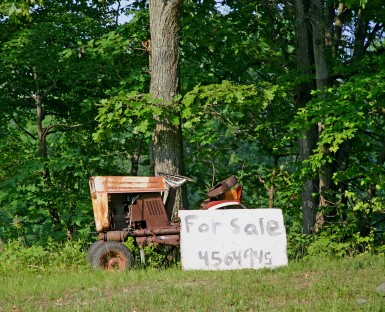
IF YOU’VE EVER taken an economics class, even in its most basic form, you probably remember a few key terms that dictate the success of businesses in the marketplace. In this article, you will become fluent in “economist” by learning about comparative advantage, opportunity cost, and true cost of production.
When providing a product to a marketplace or offering a service, whether it be to consumers or businesses, ensure that you are spending time on the things that are your specialty and that are an efficient use of your time. For example, don’t make your own wiring for an electro-mechanical product if you can find a source elsewhere, such as a factory in Wuxi, China, to manufacture that same component for a lot less money. This is an example of comparative advantage. When an individual, a business, or a country can provide a product or service more efficiently and/or less costly than the others in the industry, they have a comparative advantage over others. This point can easily be expanded to further explain why we trade with other nations around the world, e.g. coffee from South America, toys from China, lumber from Canada, and customer service from India.
Remember, above, when we mentioned efficient use of your time? This ties directly into the idea of opportunity cost. Opportunity cost is the item, task or alternative that you are forfeiting by choosing to spend your time or money elsewhere. An example would be if you spend three hours in a machine shop making a widget, then the opportunity cost is what you could have gotten done during those three hours if you hadn’t made the widget. Got it? Good. The tip here is to make sure that you are making the best use of your time by understanding what things you are efficient doing and what you should outsource to another professional or business.
The third, and probably most shocking, reality is the true cost of production. “True cost” refers to all facets of the product or service development process from start to finish. The fully-loaded expenses associated with product production or service-providing include research and development, beta testing, sampling, market testing, creating sales material, promoting the product, selling expenses, carrying costs, returns and loss, administrative expenses and other miscellaneous costs associated with that particular product. All of these expenses are real and need to be accounted for and recovered throughout the product or service life-cycle.
The above examples may seem like common sense, but you would be surprised how many small business owners lose sight of the fact that if a business produces a few products or provides a few services, then all of the expenses of the company have to be built into the cost to create a true cost. The person answering phones, the janitorial services at the office, the trash service for the manufacturing facility, and the utilities, to list a few, all need to be addressed. It may seem tedious, but in a successful business with organized financials, all of these line-items are accounted for and built into the company’s deliverables.
Remember to keep this in mind: If what you are looking at is an expense of the company, then account for that and decide where the money is going to come from that pay for it. I’ve seen businesses royally screw this ideology up. One example I can think of, off-hand, is a residential landscaping business in my local area. I’ve seen, first-hand, how not managing the little items can ruin a very simple successful small business.
Before they went out of business, I had a lawn care company cutting my half-acre yard once a week for $100 a month. That is 52 cuts for $1,200 a year. If you do the simple math, you’ll see that I was paying $23.07 per cut. Now understand that it took three guys approximately thirty minutes to cut, edge, trim and blow. Assuming that the guys were each making $10 per hour, the labor cost for my yard was $15 dollars. From there, add an expense for the lawn care equipment, the truck, trailer, gasoline for the equipment, the oil for the equipment that took 50/1 mix, fuel to drive to the location being serviced, the hourly rate being paid to the crew members as they drove to the jobsite, and the depreciation associated with all of the equipment.






















